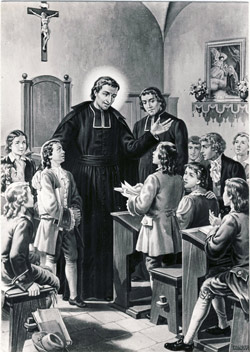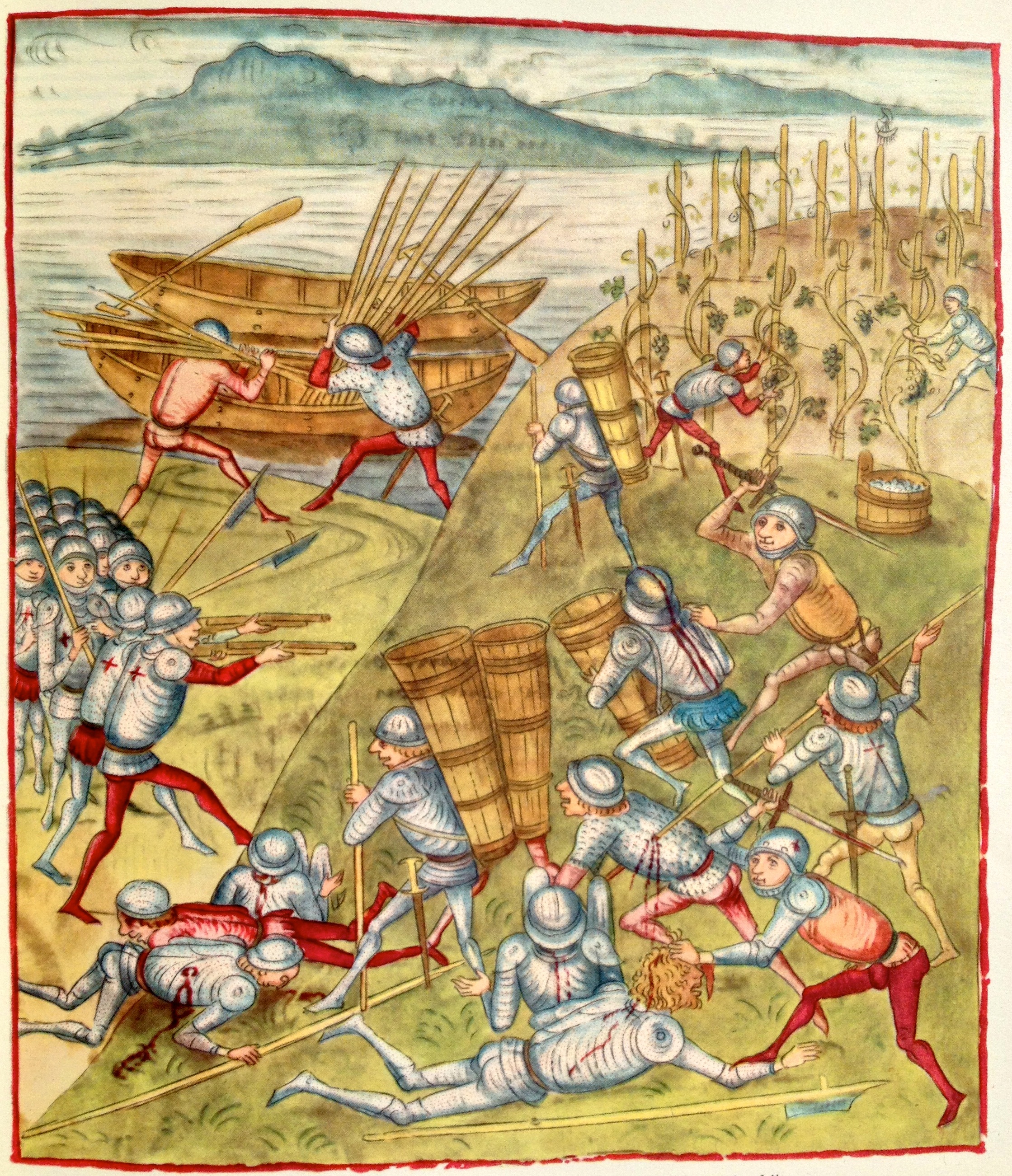|
Battle Of Chocim (1673)
The Battle of Khotyn or Battle of Chocim, also known as the Hotin War, took place on 11 November 1673 in Khotyn, where the forces of the Polish–Lithuanian Commonwealth under the Grand Hetman of the Polish Crown John Sobieski defeated Ottoman Empire forces, with Moldavian and Wallachian regiments, led by Hüseyin Pasha. It reversed the fortunes of the previous year, when Commonwealth weakness led to the signing of the Treaty of Buchach, and allowed John Sobieski to win the upcoming royal election and become the King of Poland. Name Khotyn (; ; ; ) was conquered and controlled by many states, resulting in many name changes. Other name variations include ''Chotyn'', or ''Choczim'' (especially in Polish). Battle The Polish-Lithuanian army, numbering some 30,000 soldiers, under the command of Grand Crown Hetman John Sobieski, besieged the Khotyn fortress in the first days of November 1673. The fortress had natural defensive qualities, as it was located in a bend of the Dnies ... [...More Info...] [...Related Items...] OR: [Wikipedia] [Google] [Baidu] |
Battle Of Khotyn (1621)
The Battle of Khotyn or Battle of Chocim or Khotyn War (in Turkish: ''Hotin Muharebesi'') was a combined siege and series of battles which took place from 2 September to 9 October 1621 between a Polish–Lithuanian Commonwealth, commanded by the Grand Hetman of Lithuania Jan Karol Chodkiewicz, against an invading Ottoman Empire, Ottoman Imperial army, led by Sultan Osman II, which was stopped until the first autumn snows. On 9 October, due to the lateness of the season and heavy losses - due to failed assaults on Commonwealth fortifications - the Ottomans abandoned their siege and the battle concluded with a stalemate, which is reflected in the treaty where some sections favour the Ottomans while others favoured the Commonwealth. Chodkiewicz died on 24 September 1621 shortly before concluding a treaty with the Turks. Name Khotyn was conquered and controlled by many states, resulting in many name changes (; ; ; ). Other variations include ''Chotyn'', or ''Choczim'' (especially in ... [...More Info...] [...Related Items...] OR: [Wikipedia] [Google] [Baidu] |
Dragoon
Dragoons were originally a class of mounted infantry, who used horses for mobility, but dismounted to fight on foot. From the early 17th century onward, dragoons were increasingly also employed as conventional cavalry and trained for combat with swords and firearms from horseback. While their use goes back to the late 16th century, dragoon regiments were established in most European armies during the 17th and early 18th centuries; they provided greater mobility than regular infantry but were far less expensive than cavalry. The name reputedly derives from a type of firearm, called a ''Dragon (firearm), dragon'', which was a handgun version of a blunderbuss, carried by dragoons of the French Army. The title has been retained in modern times by a number of armoured warfare, armoured or ceremonial mounted regiments. Origins and name The establishment of dragoons evolved from the practice of sometimes transporting infantry by horse when speed of movement was needed. During th ... [...More Info...] [...Related Items...] OR: [Wikipedia] [Google] [Baidu] |
Battles Involving Wallachia
A battle is an occurrence of combat in warfare between opposing military units of any number or size. A war usually consists of multiple battles. In general, a battle is a military engagement that is well defined in duration, area, and force commitment. An engagement with only limited commitment between the forces and without decisive results is sometimes called a skirmish. The word "battle" can also be used infrequently to refer to an entire operational campaign, although this usage greatly diverges from its conventional or customary meaning. Generally, the word "battle" is used for such campaigns if referring to a protracted combat encounter in which either one or both of the combatants had the same methods, resources, and strategic objectives throughout the encounter. Some prominent examples of this would be the Battle of the Atlantic, Battle of Britain, and the Battle of France, all in World War II. Wars and military campaigns are guided by military strategy, whereas batt ... [...More Info...] [...Related Items...] OR: [Wikipedia] [Google] [Baidu] |
Battles Involving The Ottoman Empire
List of the main battles in the history of the Ottoman Empire are shown below. The life span of the empire was more than six centuries, and the maximum territorial extent, at the zenith of its power in the second half of the 16th century, stretched from central Europe to the Persian Gulf and from the Caspian Sea to North Africa. The number of battles the empire fought is quite high. But here only the more important battles are listed. Among these, the battles fought in the 20th century ( Turco-Italian War, Balkan Wars, and World War I ) as well as the sieges (like the sieges of Constantinople, Cairo, Belgrade, Bagdad, etc.) which most lists include as battles are not shown except in cases where the siege is followed by a battle (i.e. Vienna, Khotyn, Plevna).Prof.Dr.Yaşar Yücel-Prof.Dr.Ali Sevim: ''Türkiye Tarihi II, III, IV'', AKDTYK Yayınları, İstanbul, 1990, List of battles ;Color legend for the location of the battle The sultans Sultan (; ', ) is a positi ... [...More Info...] [...Related Items...] OR: [Wikipedia] [Google] [Baidu] |
1673 In Europe
Events January–March * January 22 – Impersonator Mary Carleton is hanged at Newgate Prison in London, for multiple thefts and returning from penal transportation. * February 10 – Molière's ''comédie-ballet'' ''The Imaginary Invalid'' premiers in Paris. During the fourth performance, on February 17, the playwright, playing the title rôle, collapses on stage, dying soon after. * March 29 – Test Act: Roman Catholics and others who refuse to receive the sacrament of the Church of England cannot vote, hold public office, preach, teach, attend the universities or assemble for meetings in England. On June 12, the king's Catholic brother, James, Duke of York, is forced to resign the office of Lord High Admiral because of the Act. April–June * April 27 – ''Cadmus et Hermione'', the first opera written by Jean-Baptiste Lully, premières at the Paris Opera in France. * May 17 – In America, trader Louis Joliet and Jesuit missionary- ... [...More Info...] [...Related Items...] OR: [Wikipedia] [Google] [Baidu] |
Conflicts In 1673
Conflict may refer to: Social sciences * Conflict (process), the general pattern of groups dealing with disparate ideas * Conflict continuum from cooperation (low intensity), to contest, to higher intensity (violence and war) * Conflict of interest, involvement in multiple interests which could possibly corrupt the motivation or decision-making * Cultural conflict, a type of conflict that occurs when different cultural values and beliefs clash * Ethnic conflict, a conflict between two or more contending ethnic groups * Group conflict, conflict between groups * Intragroup conflict, conflict within groups * Organizational conflict, discord caused by opposition of needs, values, and interests between people working together * Role conflict, incompatible demands placed upon a person such that compliance with both would be difficult * Social conflict, the struggle for agency or power in something * Work–family conflict, incompatible demands between the work and family roles of ... [...More Info...] [...Related Items...] OR: [Wikipedia] [Google] [Baidu] |
Russian Academy Of Sciences
The Russian Academy of Sciences (RAS; ''Rossíyskaya akadémiya naúk'') consists of the national academy of Russia; a network of scientific research institutes from across the Russian Federation; and additional scientific and social units such as libraries, publishing units, and hospitals. Peter the Great established the academy (then the St. Petersburg Academy of Sciences) in 1724 with guidance from Gottfried Wilhelm Leibniz, Gottfried Leibniz. From its establishment, the academy benefitted from a slate of foreign scholars as professors; the academy then gained its first clear set of goals from the 1747 Charter. The academy functioned as a university and research center throughout the mid-18th century until the university was dissolved, leaving research as the main pillar of the institution. The rest of the 18th century continuing on through the 19th century consisted of many published academic works from Academy scholars and a few Academy name changes, ending as The Imperial ... [...More Info...] [...Related Items...] OR: [Wikipedia] [Google] [Baidu] |
Arquebusiers
An arquebus ( ) is a form of long gun that appeared in Europe and the Ottoman Empire during the 15th century. An infantryman armed with an arquebus is called an arquebusier. The term ''arquebus'' was applied to many different forms of firearms from the 15th to 17th centuries, but it originally referred to "a hand-gun with a hook-like projection or lug on its under surface, useful for steadying it against battlements or other objects when firing". These "hook guns" were in their earliest forms defensive weapons mounted on German city walls in the early 15th century. The addition of a shoulder stock, priming pan, and matchlock mechanism in the late 15th century turned the arquebus into a handheld firearm and also the first firearm equipped with a trigger. The exact dating of the matchlock's appearance is disputed. It could have appeared in the Ottoman Empire as early as 1465 and in Europe a little before 1475. The heavy arquebus, which was then called a musket, was developed to ... [...More Info...] [...Related Items...] OR: [Wikipedia] [Google] [Baidu] |
Armoured Companion
The armoured companion (, , ) was a medium-cavalryman used by the Polish–Lithuanian Commonwealth in the 16th to 18th centuries. They are named after their chain mail armour. These units were the second-most important (and successful) cavalry in the Polish–Lithuanian army, after the hussars. Most ''pancerni'' were recruited from the middle to lowest classes of the Polish nobility. These companions were organized into companies, with each company (, or ) consisting of 60 to 200 horsemen. The Cossacks were renamed armoured cavalry () in 1676 as the Cossack name was associated with the Khmelnytsky Uprising. After the reforms in 1776, both hussars and armored companions were transformed into National Cavalry units. Arms and armour They used chainmail or bechter armour to protect the upper body, vambrace sometimes with gauntlets, secretes (rarely lobster-tailed pot helmets), buckler shields, sabre, composite bow, pistols, and carbine. Earlier companies would sometimes be e ... [...More Info...] [...Related Items...] OR: [Wikipedia] [Google] [Baidu] |
Michael Wisniowiecki, King Of Poland
Michael may refer to: People * Michael (given name), a given name * he He ..., a given name * Michael (surname), including a list of people with the surname Michael Given name * Michael (bishop elect)">Michael (surname)">he He ..., a given name * Michael (surname), including a list of people with the surname Michael Given name * Michael (bishop elect), English 13th-century Bishop of Hereford elect * Michael (Khoroshy) (1885–1977), cleric of the Ukrainian Orthodox Church of Canada * Michael Donnellan (fashion designer), Michael Donnellan (1915–1985), Irish-born London fashion designer, often referred to simply as "Michael" * Michael (footballer, born 1982), Brazilian footballer * Michael (footballer, born 1983), Brazilian footballer * Michael (footballer, born 1993), Brazilian footballer * Michael (footballer, born February 1996), Brazilian footballer * Michael (footballer, born March 1996), Brazilian footballer * Michael (footballer, born 1999), Brazilian footballer ... [...More Info...] [...Related Items...] OR: [Wikipedia] [Google] [Baidu] |





